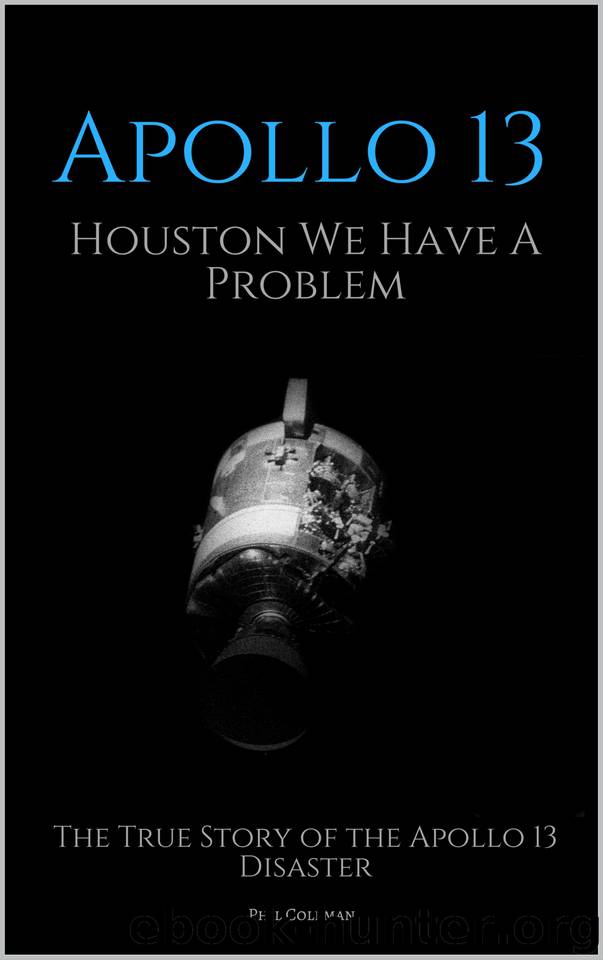APOLLO 13: Houston We Have A Problem: The True Story of the Apollo 13 Disaster by Coleman Phil

Author:Coleman, Phil [Coleman, Phil]
Language: eng
Format: epub
Published: 2017-08-20T16:00:00+00:00
The Successful Experiments of Apollo 13
Though it did fail in its primary object to land on the moon and continue study there, there were successes to be found during the Apollo 13 mission. Separate from the moon landing, there were several experiments that they managed to conduct and complete successfully. These successes were all either completed before the oxygen tank exploded or performed independently.
Both before and during the Apollo 13 launch, several experiments were conducted in order to study the electrical phenomena. The information that was learned from these experiments was then used in order to find a better understanding of the hazards of launching when it came to weather conditions that were less than ideal.
In order to better understand how plausible it might be to use geosynchronous satellites in order to study the height of clouds, there were eleven different photographs taken of Earth at times that were precisely recorded in order to make the data as specific as possible.
The S-IVB third stage of Apollo 13 was the first of its kind to be sent crashing into the surface of the moon on purpose. This was an experiment on active seismic readings, and the impact when it hit was measured through a seismometer that had been left by the Apollo 12 crew on the surface of the moon. On all four lunar missions that had been sent out previously, the S-IVBs were thrown into solar orbit after they were used on orders from ground control.
Download
This site does not store any files on its server. We only index and link to content provided by other sites. Please contact the content providers to delete copyright contents if any and email us, we'll remove relevant links or contents immediately.
| Aeronautics & Astronautics | Astronomy |
| Astrophysics & Space Science | Comets, Meteors & Asteroids |
| Cosmology | Mars |
| Solar System | Star-Gazing |
| Telescopes | UFOs |
Tools of Titans by Timothy Ferriss(8216)
Turbulence by E. J. Noyes(7935)
Secrets of Antigravity Propulsion: Tesla, UFOs, and Classified Aerospace Technology by Ph.D. Paul A. Laviolette(5309)
Astrophysics for People in a Hurry by Neil DeGrasse Tyson(5130)
Room 212 by Kate Stewart(5035)
Design of Trajectory Optimization Approach for Space Maneuver Vehicle Skip Entry Problems by Runqi Chai & Al Savvaris & Antonios Tsourdos & Senchun Chai(5011)
Pale Blue Dot by Carl Sagan(4909)
The David Icke Guide to the Global Conspiracy (and how to end it) by David Icke(4624)
A Journey Through Divination and Astronomy by Publishing Pottermore(4344)
Goodbye Paradise(3726)
Apollo 8 by Jeffrey Kluger(3635)
COSMOS by Carl Sagan(3554)
Losing the Nobel Prize by Brian Keating(3498)
The Five People You Meet in Heaven by Mitch Albom(3474)
How to Read Water: Clues and Patterns from Puddles to the Sea (Natural Navigation) by Tristan Gooley(3406)
Brief Answers to the Big Questions by Stephen Hawking(3369)
How to Read Nature by Tristan Gooley(3249)
The Order of Time by Carlo Rovelli(3145)
A Brief History of Time by Stephen Hawking(2960)
